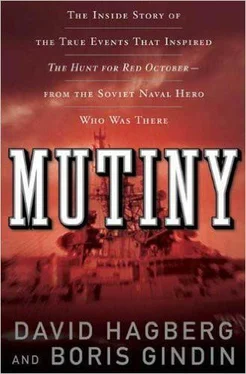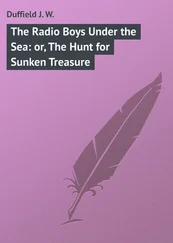They might be attacked or sunk, or they might be boarded and everyone who wasn’t killed in the gun battle arrested. If that happened they would probably all die anyway.
Nine ounces. The entire concept had to be a constant thread running through the zampolit’s head. He was a Russian. He’d heard the stories.
Most often the up close and personal executions are not carried out on some windswept hillside, beside a long open-pit grave, but take place at the end of a short corridor that opens to a small, bare room. Cold tile walls, maybe a painted concrete floor that slopes front to back to a narrow trough with a drain in one corner. Often there is a short section of hose connected to a spigot and sometimes, but not always, a chair or a metal stool in the middle of the room, just below a bare lightbulb.
No windows admit the light of day or the stars at night. No radios at the end of the hall play music. No whir of fans or other machinery can be heard. No one is talking somewhere else in the building, the voices barely a murmur. It’s not hot, nor is it overly cold.
It is an indifferent place. Anonymous, like the people who pass through it.
But it is the end, and all prisoners who come to this point finally understand that this is the very last place on earth that they will ever see. This is the very last bit of the living world that they will experience. Begging, pleading, bribing, screaming, crying, cajoling, threatening will not have any effect. It’s possible that there are miracles, but not in a place like this.
According to a study by the NewYork-Presbyterian Hospital, almost every victim who is shot in the head and arrives in the ER deeply comatose will die. In these cases very little can be done to try to save the person, because, according to the report, “of the futility of the situation.”
One of the common tests is the Glasgow Coma Scale. The higher the score, the more likely it is that the patient will recover, and therefore the more aggressive the treatment should be.
Three tests are given, one for eye opening, in which a score of 4 means the victim’s eyes are open and 1 means the eyes remain closed no matter what is said or done to them. Verbal responses run from a score of 4, which means that the victim can talk and make sense, to 1, in which the words make no sense, and finally to 0, where the patient says nothing. Another test is for motor responses, in which a score of 6 means the patient can respond to a command, such as lifting an arm when asked to do so, to 2, in which the patient might twitch, and finally 1, in which there is absolutely no response, even to a pinprick to the bottom of a foot.
Next the ER nurse or doctor looks for some other signs of life or the possibility of survival. What are the sizes of the pupils and their reaction to light? Is there any drainage from the mouth or ears? Does the chest expand evenly? Are the heart tones within limits? Are the lung sounds clear on the right and left? Are wheezes or crackles present? Is the abdomen soft, flat, rigid, or distended? Is the patient incontinent? Does the victim have movement and reactions in the upper and lower extremities? Does the victim have normal movement of the back, or is he or she paralyzed?
If there are any signs of life the victim should be immediately given a normal saline solution for fluid replacement. Blood should be drawn for laboratory analysis.
Above all, if there is to be any chance of survival, the victim should be placed so that he or she is comfortable and can breathe without trouble. He or she should be covered in warm blankets, especially around the head, neck, and shoulders, to prevent shock.
The wound should be cleaned and covered with a sterile dressing.
Drains should be put in place—a nasogastric tube to reduce the risk of the victim throwing up and drowning on his or her own vomit, and a Foley catheter to decompress the bladder and so that the medical staff can check the victim’s urine output.
Then there is blood loss that has to be considered. A small man of around 150 pounds has about five quarts of blood in his body. If he loses about three-quarters of a quart, his heartbeat will increase to try to push what’s left to all the organs so that they will survive and function. He’ll become light-headed and nauseous and will begin to sweat.
If he loses a quart or so, his blood pressure will drop dramatically. The damage to his system becomes almost irreversible unless something is done soon.
Then, with around a 40 percent bleed-out, with loss of nearly two quarts of blood, the damage is complete. The victim goes into shock, which leads to cardiac arrest, and it’s game over. Nothing can be done to revive the victim. He dies.
According to Patricia Ann Bemis, RN, CEN, who conducts an online nursing course on stab, gunshot, and penetrating injuries: “Penetrating injuries to the brain have a high mortality rate. Missile wounds from high velocity weapons [such as a 9mm pistol at contact range] can penetrate the skull. All patients with brain… trauma are assumed to have cervical spine injury until proven otherwise by a negative X-ray or CT.”
A brief NewYork-Presbyterian Hospital article on cranial gunshot wounds warns that death will most likely occur if any combination of factors piles up against the victim: a low Glasgow Coma Scale score, an older age, low blood pressure (because of blood loss or other problems), lack of oxygen after the trauma, dilated, nonreactive pupils, and a bullet trajectory that plows through several lobes of the brain or the ventricular system.
All the medical bulletins and monographs agree on a few basic points: A victim of a gunshot wound to the head, especially to the back of the head, probably will not survive without immediate medical help, and even then the prognosis is extremely poor. Shooting someone in the back of the head at close range is a fairly sure way of ensuring the victim will not survive to tell any tale.
It all comes down to the amount of kinetic energy transferred from the bullet to the bone and soft matter of the skull and brain. So long as the projectle remains inside the skull—it does not plow through brain and come out the other side—all the energy of the bullet is transferred to the skull and brain. The damage is maximized.
If a silencer is used and the pistol is fired into the back of the skull at point-blank or near point-blank range, the entrance wound will probably be greater and the damage to the soft tissue even more extensive than with a nonsilenced gunshot wound. Either way, however, such wounds are usually fatal.
When the bullet hits first the bone of the skull, it deforms and sometimes even fragments before it enters the brain. In each case the damage is worse than if the bullet entered the brain intact.
The energy from a bullet entering the brain at the speed of sound will probably cause hyrdraulic shock, which will rupture blood vessels on all sides of the bullet’s path. Bits of shattered bone fragments pushed into the brain also cause more damage. And the discharge gases that spew out of the muzzle can also enter the brain through the wound in the skull and act like a blowtorch.
When the pistol is pressed against the back of the victim’s head or within an inch of contact, the edges of the wound are seared by the hot gasses, just like a piece of meat held over an open flame will be cooked and turn black from the soot baked into the skin.
The KGB knows all these details, but for men such as Sablin who are caught up in their grand adventure they cannot think beyond the possibility of their arrest and execution. After all, what does it matter how a man dies, so long as it is quick and painless? A bullet to the back of the skull is certainly quick and, for the rare few who get immediate medical attention and survive, almost completely painless.
Читать дальше












